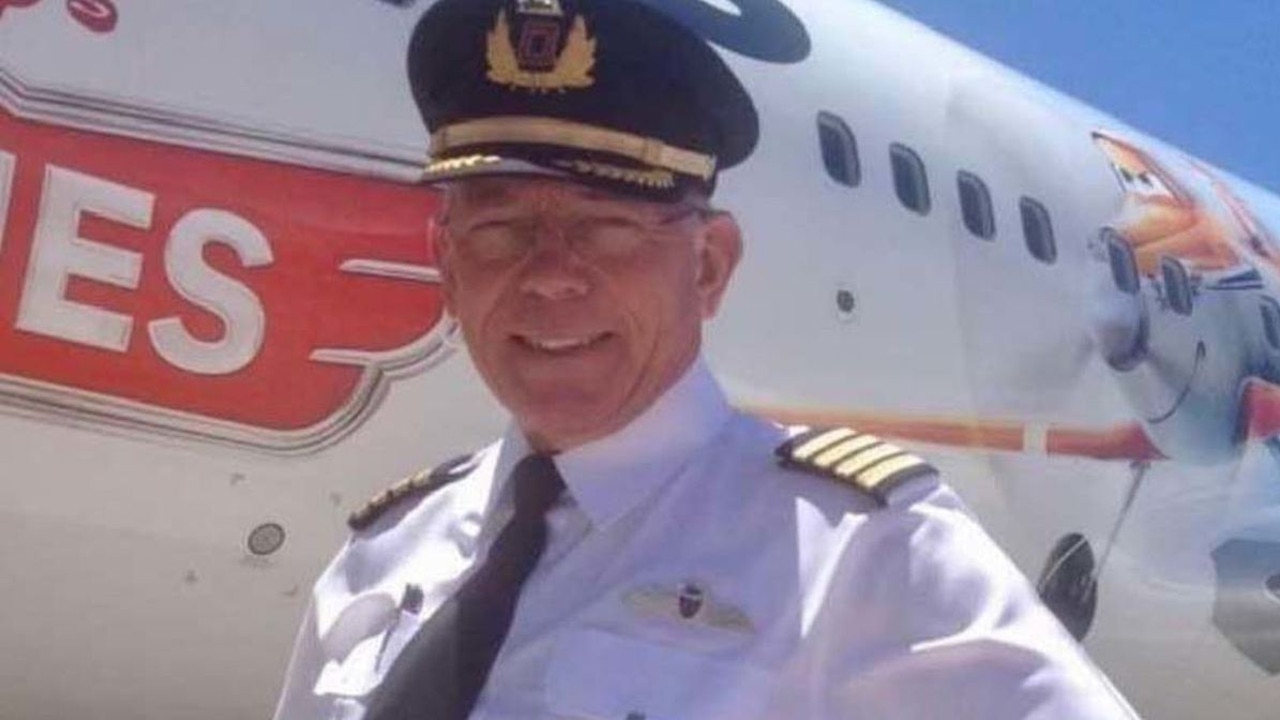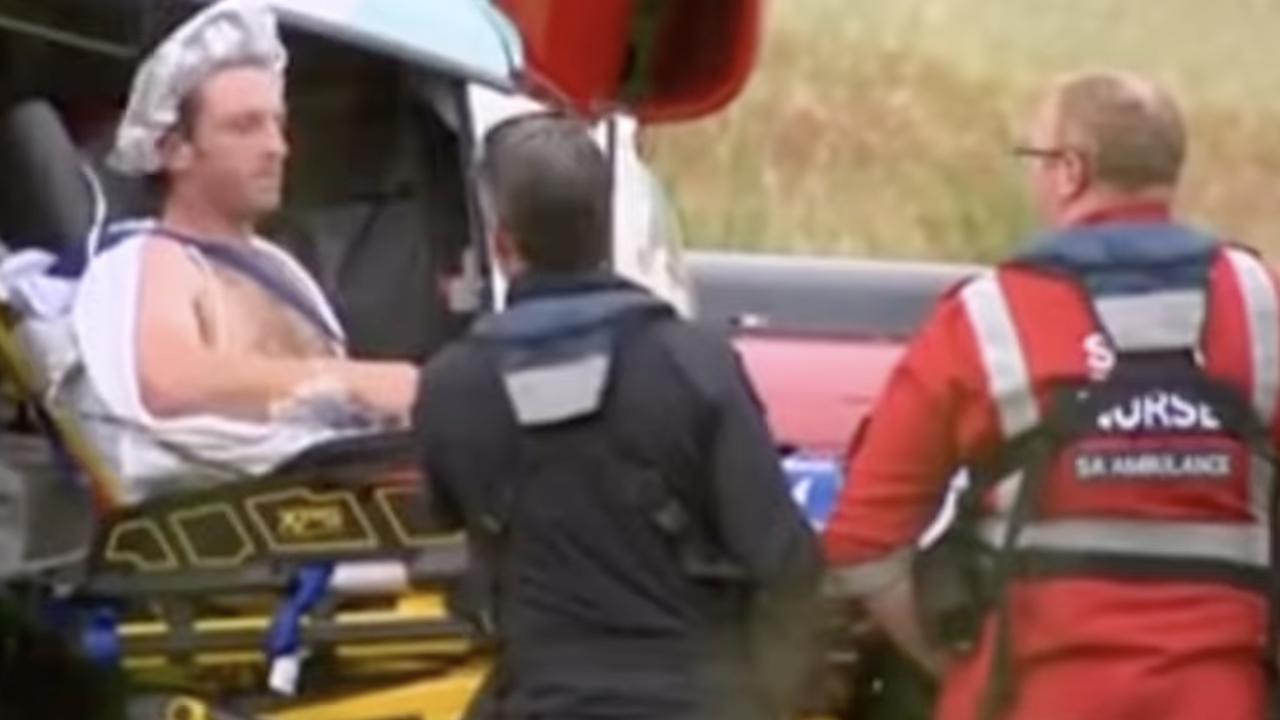Aviation expert reveals theory on what caused deadly Nepal plane crash
An aviation expert has revealed an unsettling theory about why a plane carrying 72 passengers crashed just moments before it was set to land in Nepal.
A new theory has emerged about what caused a plane carrying 72 passengers, including one Australian, to crash in Nepal minutes before it was set to land.
At least 68 of the passengers on board the ATR-72 turboprop have been confirmed dead after the plane crashed in the city of Pokhara on Sunday, about 200km west of the capital of Kathmandu.
The flight crashed into the gorge between Pokhara’s domestic and brand new international airport, which had only just opened on New Year’s Day.
Now, one of the world’s leading aviation experts, Professor Ron Bartsch, has revealed what may have caused the deadly crash.
Speaking to Nine’s Today on Monday morning, Professor Bartsch suggested an aerodynamic stall may have been behind the tragic incident.
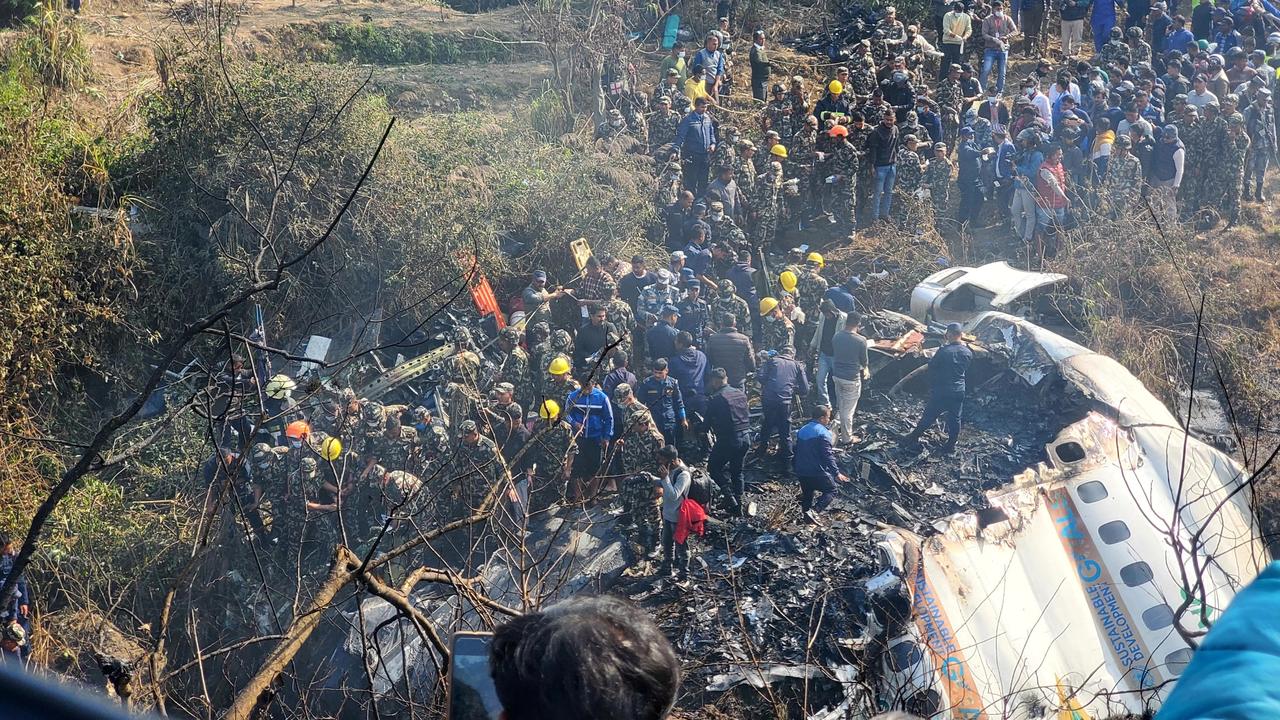
He said an optical illusion when travelling over the ground may have caused the pilot to believe they were travelling through the air faster than they actually were, resulting in the plane stalling.
“Aircraft require air to fly in and the air is more rarefied at about 800 meters elevation there,” the professor explained.
“When you’re going over the grounds, it may appear that you’re going a lot faster over the ground than what you’re going through the air. That’s what caused a stall.”
Difficult terrain such as very strong winds and a high altitude also makes it a tough area to fly in, Professor Bartsch added.
“Also the runways are very, very challenging. Some of the most challenging in the world,” he said.
He said it was possible a pilot error could have contributed to the crash, adding the investigation would look at whether there had been “proper training”.
“Normally aircraft don’t just fall out of the sky, particularly modern aircraft,” he said.

New footage emerges after crash
Footage shared to social media shows what is reported to be the Yeti Airlines plane flying low towards what appears to be a residential building before abruptly turning 90 degrees and coming even lower to the ground.
It then disappears from view before the camera is turned towards the ground. Then there is a loud noise, followed by what sounds like screams.
Journalist for the BBC and CNN Wajahat Kazmi shared the footage and said: “Horrifying last moments of an ATR plane crash from Nepal in Pokhara that was bound for Kathmandu.”
Arun Tamu, 44, who was about 500 metres from where the incident occurred, told the AFP the crash sounded like a “bomb”.
“I was walking when I heard a loud blast like a bomb went off,” he said.
“A few of us rushed to see if we can rescue anybody. I saw at least two women were breathing. The fire was getting very intense and it made it difficult for us to approach closer.”
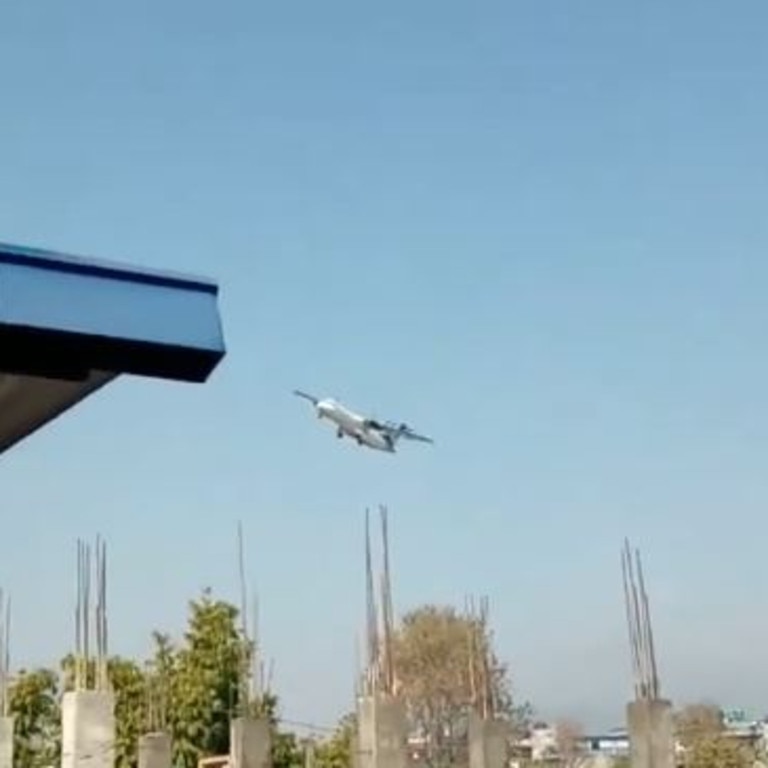
Another video appears to show the situation inside the cabin just moments before the crash, with four passengers reportedly live-streaming on Facebook.
According to The Times of India, one of the passengers shouts, “mauj kar di”, meaning “it’s real fun” as the video pans over to the window, showing the city of Pokhara below.
The four passengers have been named as Sonu Jaiswal, 29, Anil Rajbhar, 28, Vishal Sharma, 23 and Abhishek Singh Kushwaha, 23.
The video pans over to Sonu Jaiswal and briefly shows some of the other passengers on the flight before everything suddenly begins to shake and passengers can be heard screaming.
The footage has not been verified independently by news.com.au, but TheTimes of India reported it had spoken to Mr Jaiswal’s cousin, Rajat Jaiswal, in the wake of the crash.
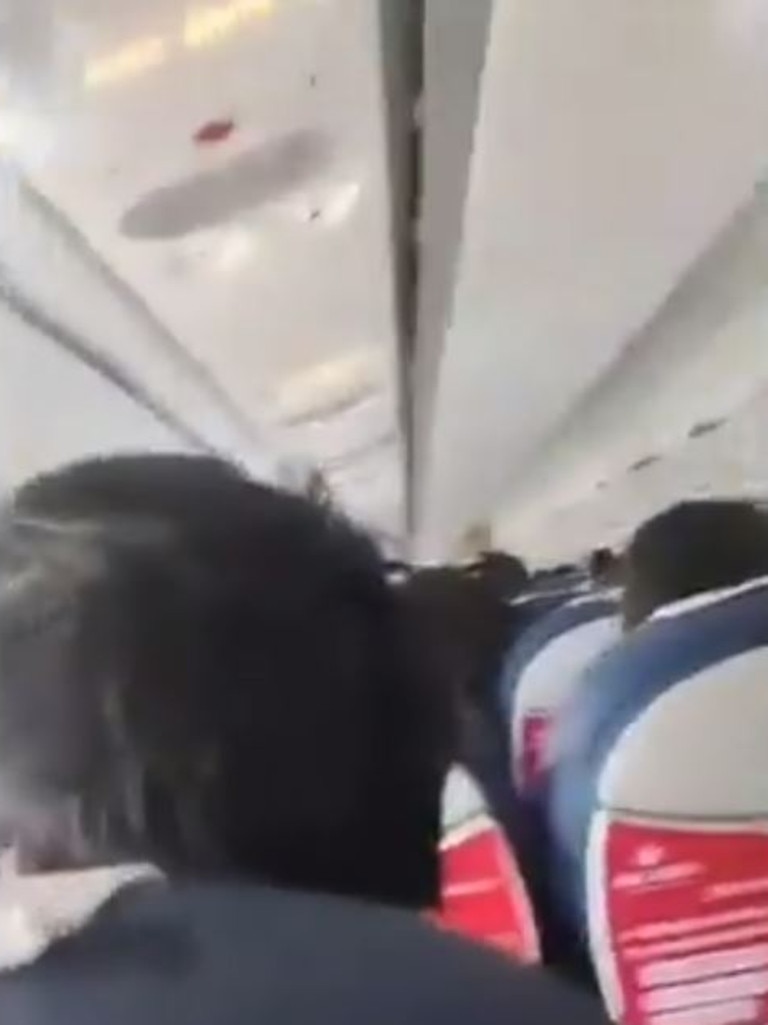
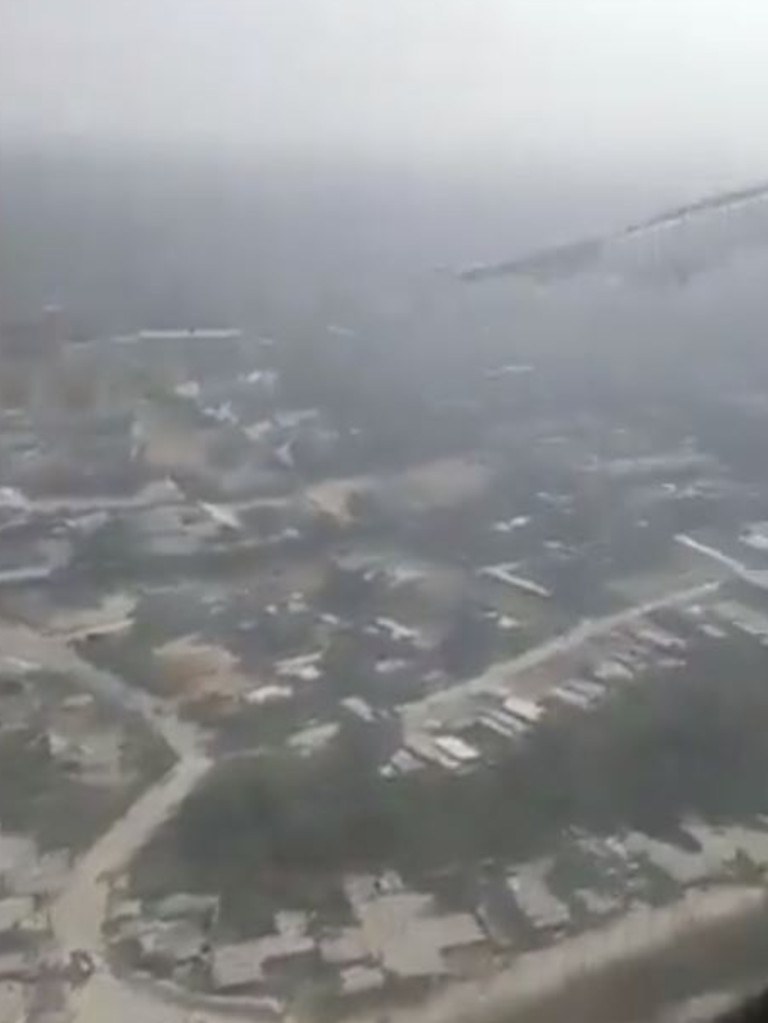
“Sonu was on Facebook live after boarding the flight for Pokhara. The live-streaming showed that Sonu and his companions were in a happy mood but all of a sudden flames appeared before the streaming stopped,” he told the publication.
In the footage, the Yeti Airlines logo is visible over Mr Jaiswal’s shoulder, along with what appears to be a Nepalese insurance advert on the seat tray.
Aircraft type in previous fatal incidents
The Yeti Airlines’ ATR-72 was 15 years old. The French/Italian aircraft type is popular around the world and is primarily used on shorter, regional routes. None are operated by Australian Airlines but the ATR-72 is in service with Air New Zealand which has 29 in its fleet.
Since its introduction in 1989, the ATR-72 has been involved in 12 fatal incidents with around 400 fatalities.
The European Union has banned all Nepali carriers from its airspace over safety concerns.
The Himalayan country also has some of the world’s most remote and tricky runways, flanked by snow-capped peaks with approaches that pose a challenge even for accomplished pilots.
Aircraft operators say Nepal lacks infrastructure for accurate weather forecasts, especially in remote areas with challenging mountainous terrain where deadly crashes have taken place in the past.
The weather can also change quickly in the mountains, creating treacherous flying conditions.
In May 2022, all 22 people on board a plane operated by Nepali carrier Tara Air – 16 Nepalis, four Indians and two Germans – died when it crashed.
Air traffic control lost contact with the twin-propeller Twin Otter shortly after it took off from Pokhara and headed for Jomsom, a popular trekking destination.
Its wreckage was found a day later, strewn across a mountainside at an altitude of around 4400 metres.
After that crash authorities tightened regulations, including that planes would only be cleared to fly if there was favourable weather forecast throughout the route.
Nepal’s deadliest aviation accident was in 1992, when all 167 people aboard a Pakistan International Airlines plane died when it crashed on approach to Kathmandu.
Just two months earlier, a Thai Airways aircraft had crashed near the same airport, killing 113 people
– with Kate Schneider and AFP




